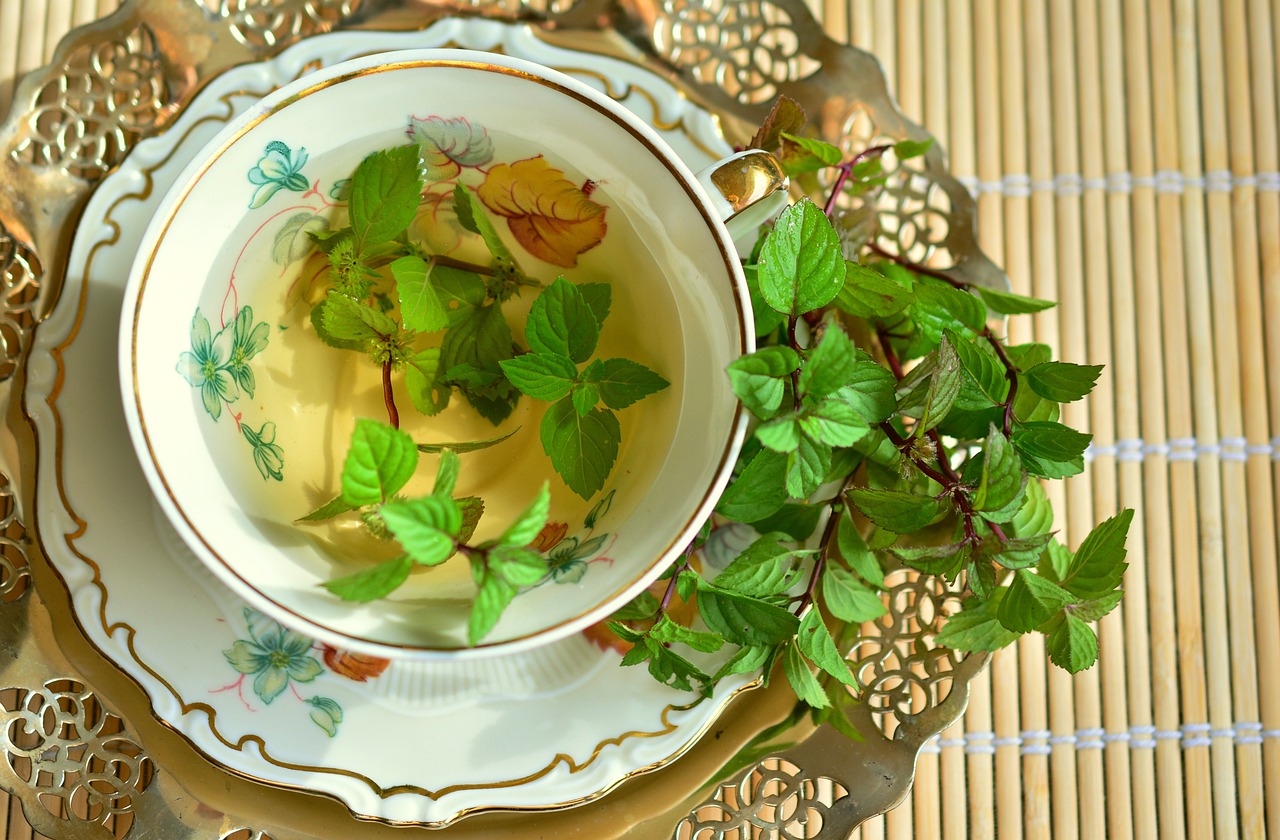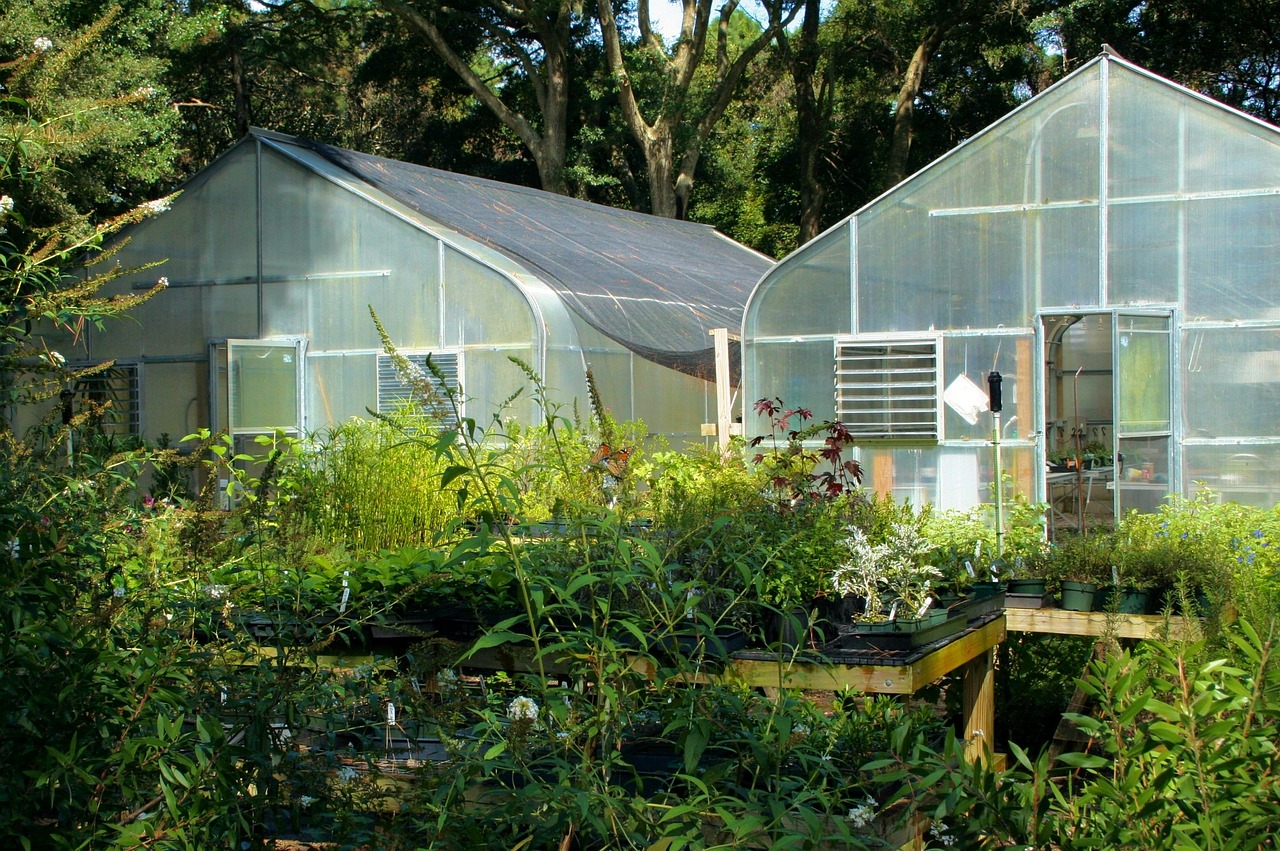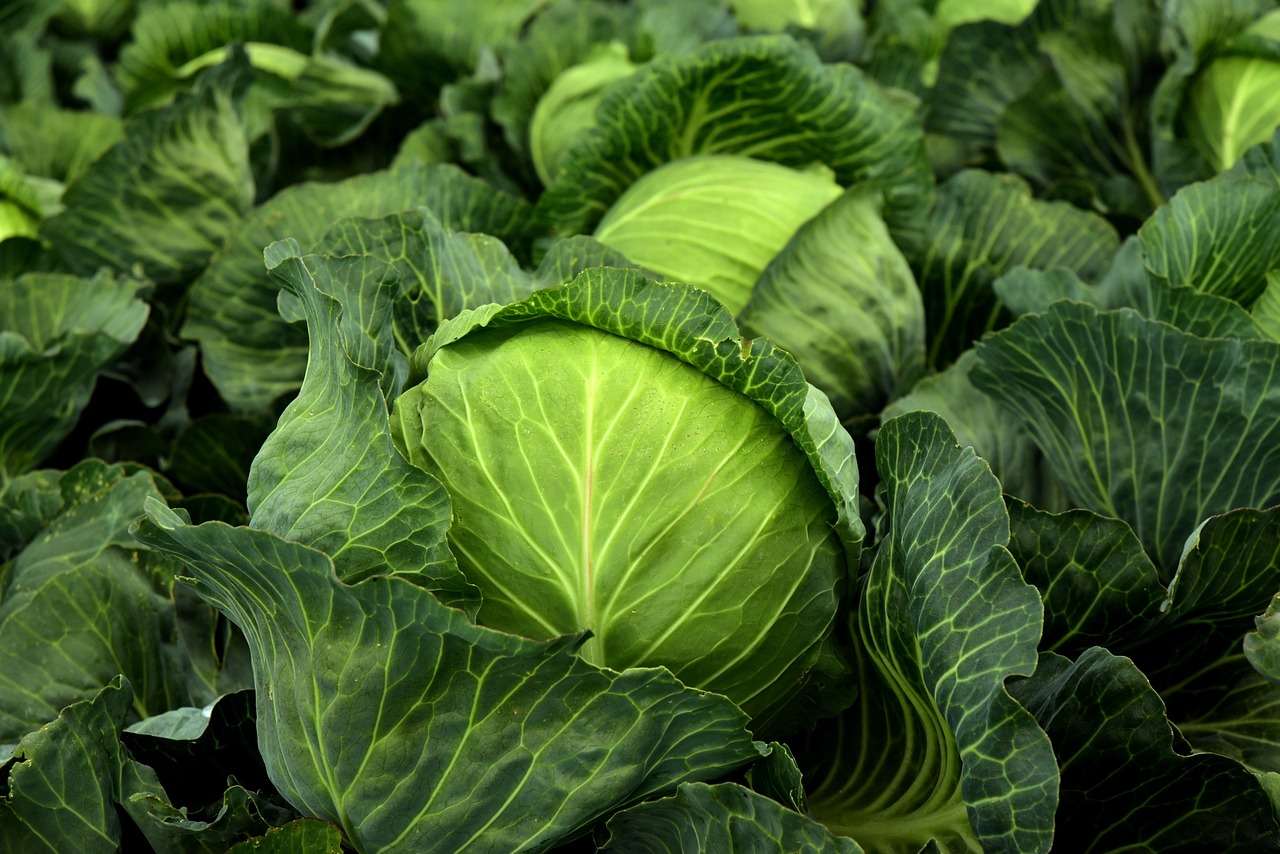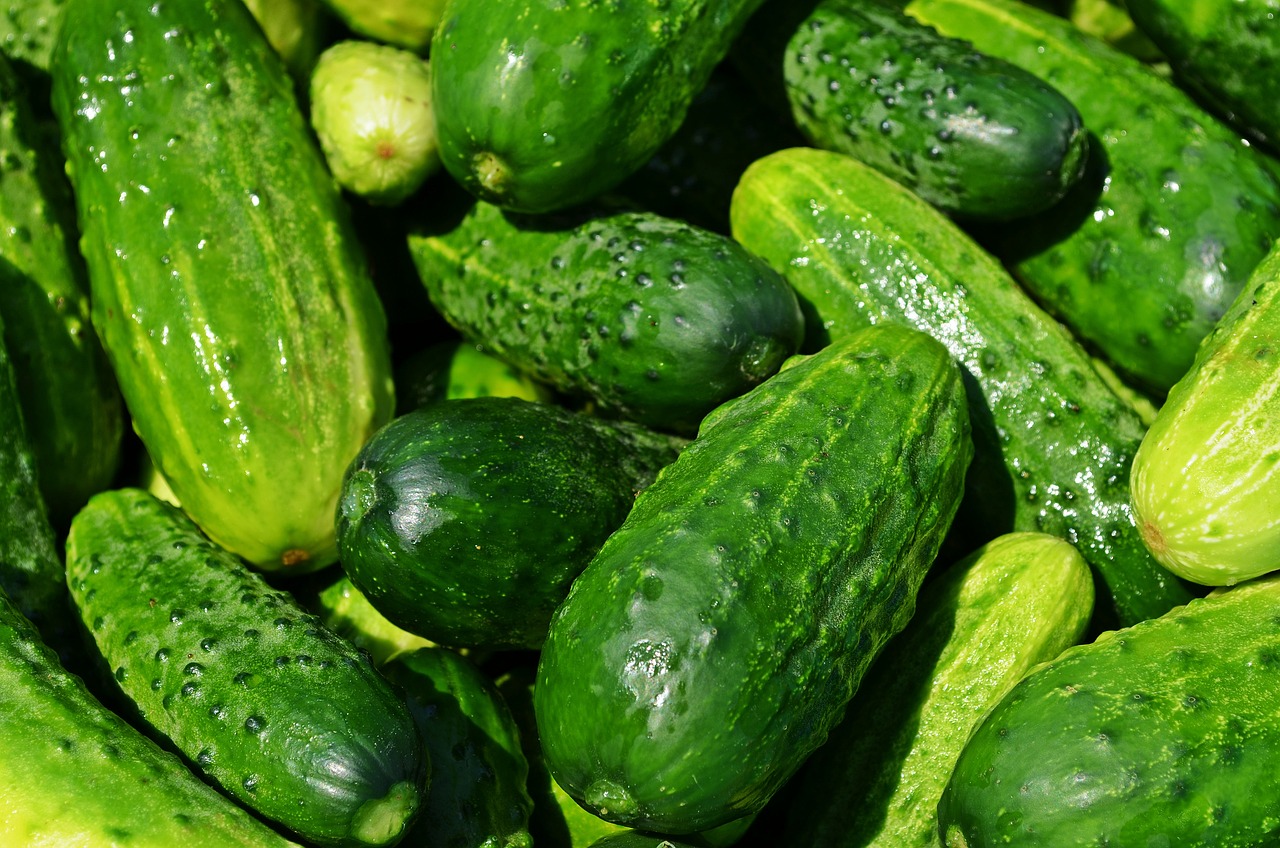Are you tired of buying tea blends from the store that never quite hit the spot? Why not try growing your own tea herbs?
Not only will you have a fresh and flavorful supply of herbs at your fingertips, but the process of growing your own tea can be incredibly satisfying and rewarding.
Choosing the right herbs for your tea garden is the first step in creating your own personalized tea blends. There are a vast array of herbs to choose from, each with their own unique flavor and medicinal properties.
By growing your own herbs, you have the opportunity to experiment with different combinations and create blends that perfectly suit your taste and needs.
In this article, we will guide you through the process of growing and caring for your own tea herbs, as well as provide tips for harvesting and creating delicious tea blends.
Get ready to experience the joy of growing your own tea herbs!
Choosing the Right Herbs for Your Tea Garden
You’ll want to start by figuring out which herbs you love to drink and planting those in your tea garden. Consider the herbal benefits and flavor profiles of each plant.
For example, if you enjoy a relaxing cup of tea before bed, you might want to plant chamomile or lavender. Both of these herbs are known for their calming properties and sweet, floral flavor. If you’re looking for something with a little more kick, you might consider planting peppermint or rosemary. Peppermint is refreshing and invigorating, while rosemary has a warm, earthy flavor that pairs well with lemon or honey.
Once you’ve selected your herbs, it’s important to do a little research on each plant’s growing conditions. Some herbs, like mint and lemon balm, can be quite invasive and will take over your garden if you’re not careful. Others, like chamomile and lavender, prefer well-drained soil and plenty of sunlight.
Make sure you’re giving each herb the conditions it needs to thrive. With a little bit of planning and care, you’ll be able to enjoy fresh, delicious tea from your very own garden all year round.
Preparing Your Garden for Planting
Before planting, it’s important to clear the area of any debris and prepare the soil to ensure optimal growth for your new herbs. Start by removing any weeds and rocks from the area.
Then, loosen the soil by tilling it with a garden fork or tiller. This will help the roots of your herbs grow more easily and deeply.
Next, you’ll want to prepare the soil by adding compost or other organic matter. This will enrich the soil with nutrients and help retain moisture.
You can make your own compost by collecting food scraps, yard waste, and other organic materials in a compost bin. Alternatively, you can purchase compost from a garden center or nursery.
Mix the compost into the soil before planting, and you’ll be on your way to a thriving tea herb garden.
Essential Care and Maintenance Tips
To ensure the health of your herb garden, it’s crucial to regularly water and fertilize the plants. Watering techniques depend on the type of plant and season.
For tea herbs, it’s important to keep the soil moist but not waterlogged. One way to achieve this is to water the plants deeply once or twice a week, rather than lightly every day. You can also use mulch to help retain moisture in the soil.
Composting benefits are also essential for maintaining a healthy herb garden. Compost is a natural fertilizer that enriches the soil with nutrients, improving plant growth and health.
You can create your own compost by collecting organic waste such as food scraps, leaves, and grass clippings. Mix these materials in a compost bin or pile and let them decompose over time. Once the compost is ready, you can spread it around your tea herb plants to provide them with the nutrients they need.
Regular watering and composting will help your tea herb garden thrive and provide you with a bountiful harvest of fresh herbs for your tea.
Harvesting and Drying Your Tea Herbs
Harvesting and drying tea herbs is a satisfying way to preserve their flavors and aromas for future use. When it comes to harvesting, it’s best to wait until the leaves have fully matured before picking them. This will ensure that the leaves have the most flavor and aroma.
You can pick the leaves by hand or use a pair of scissors to snip off the stems. After harvesting, it’s important to rinse the leaves in cold water to remove any dirt or debris.
Once you’ve harvested your tea herbs, it’s time to dry them. To do this, you can either hang the herbs upside down in a dry, well-ventilated area or use a dehydrator. The drying process can take anywhere from a few days to a week, depending on the humidity in your area.
When the herbs are completely dry, store them in an airtight container away from direct sunlight. You can use these herbs to brew tea using different methods such as infusion or decoction. Not only will you be able to enjoy the delicious flavors and aromas, but you’ll also be reaping the herbal tea benefits.
Creating Delicious Tea Blends with Your Homegrown Herbs
Now that you’ve successfully dried your tea herbs, let’s explore the exciting world of creating delicious tea blends! With your homegrown herbs, you have the opportunity to experiment and create unique flavor profiles that you may not find in store-bought teas.
Try blending peppermint with chamomile for a calming and refreshing tea, or mix lemon balm with lavender for a soothing and aromatic blend. The possibilities are endless, so don’t be afraid to get creative and try new combinations.
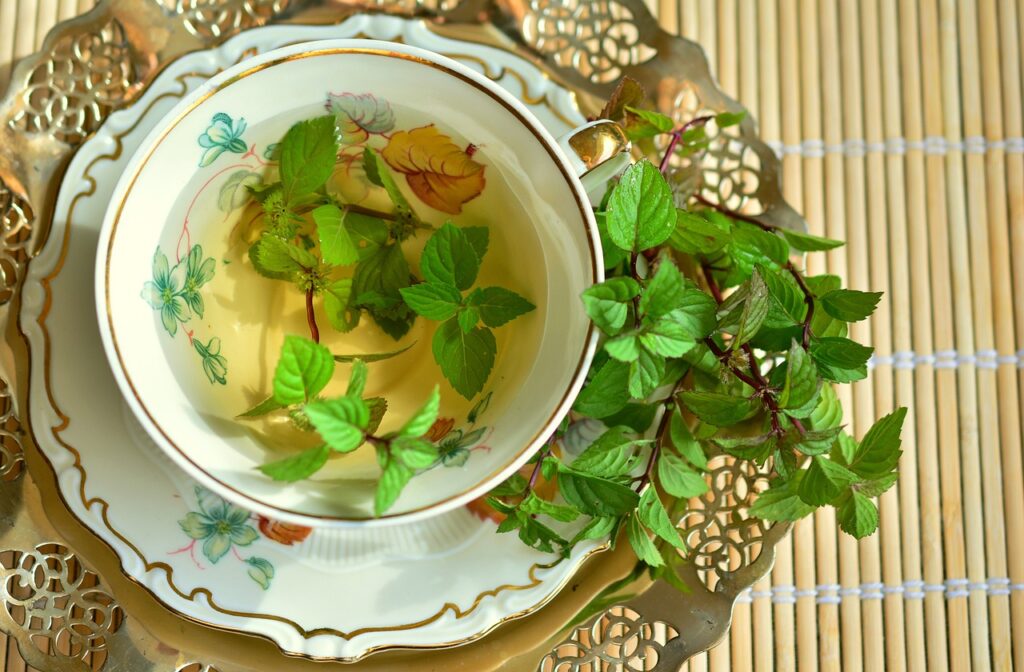
In addition to exploring unique flavor profiles, it’s important to consider the tea brewing techniques that will bring out the best in your homemade blends. For example, different herbs require different steeping times and water temperatures.
Chamomile and lavender should be steeped in hot, but not boiling water, for around 5-7 minutes, while black tea can handle boiling water for 3-5 minutes. Experiment with different brewing techniques and find what works best for your blends.
With a little bit of creativity and experimentation, you’ll soon be sipping on delicious and unique tea blends that you’ve crafted from your own garden!
Frequently Asked Questions
How long does it take for tea herbs to grow and be ready for harvesting?
Tea herbs can take anywhere from a few weeks to several months to grow, depending on the type. Optimal harvesting time varies as well, but generally, it’s best to wait until the leaves are mature and dark green.
Can tea herbs be grown indoors or do they need to be grown outside?
You can grow tea herbs both indoors and outdoors, but indoor growing requires proper lighting and temperature control. Best tea herbs for beginners include mint, chamomile, and lemon balm, which are easy to grow and maintain.
Are there any common pests or diseases that affect tea herb plants?
Preventing infestations is important for tea herb plants. Common pests include aphids, spider mites, and whiteflies. Natural remedies like neem oil, horticultural soap, and ladybugs can help control infestations. Keep plants healthy with proper watering and pruning.
Can tea herbs be used for anything other than making tea?
Tea herbs have various uses other than making tea. You can create unique herbal tea blends by mixing different tea herbs. Additionally, tea herbs can be used in culinary dishes, adding flavor and health benefits.
Can the same tea herb plant be harvested multiple times in one growing season?
Maximizing Tea Herbs: Tips for Successful Multiple Harvests. Yes, tea herb plants can be harvested multiple times in one growing season. Yield boosters such as frequent pruning and proper fertilization can increase the plant’s sustainability and yield.
Conclusion
Congratulations on embarking on the delightful journey of growing your own tea herbs! With a little bit of effort and patience, you can create a thriving garden that will provide you with fresh and flavorful herbs to use in your homemade tea blends.
Remember to choose herbs that suit your taste preferences and growing conditions, and to prepare your garden properly before planting.
Once your garden is established, be sure to provide it with the care and attention it needs to thrive, including regular watering, fertilizing, and pruning. And when the time comes to harvest your herbs, take care to dry them properly to ensure they retain their flavor and aroma.
With a little bit of creativity and experimentation, you can create unique and delicious tea blends that are truly your own. So go ahead, start growing your own tea herbs, and enjoy the many benefits of this delightful hobby!






